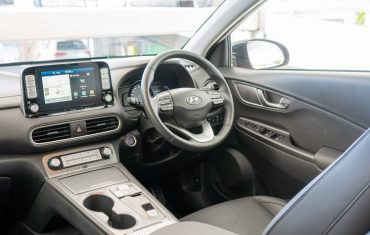
5 questions about the new Lease Accounting Standards
For your fleetThe International Accounting Standards Board (IASB), responsible for issuing International Financial Reporting Standards (IFRS), introduced a new standard for lease accounting in 2017. This new standard changed accounting for vehicle fleets.
Here are five questions about the changed lease accounting standards that are relevant for all fleet managers.
1. How were vehicle leases accounted for before the change?
Vehicles leases can be classified in two basic categories:
- Finance lease
- Operating lease
Under a finance lease, the lease assets (vehicles) were recorded on the balance sheet of the company using the vehicles. With an operating lease, the leased vehicles were not included on the balance sheet.
Not including the operating leases on the balance sheet was criticised for not providing a clear and transparent picture of the benefits and obligations a company has resulting from operating leases.
By also incorporating the operating leases onto the balance sheet, the standards setters aimed to increase the transparency and consistency of the related financial reporting.
2. What changed?
Aimed at improving transparency and comparability between companies that lease and buy their assets, IFRS 16 now requires businesses to recognise a right to use a vehicle and a liability to make payments on their balance sheet.
Under IFRS lease accounting, companies have a revised Profit or Loss profile, recognising depreciation and interest rather than a lease expense.
The idea is that, under a lease contract, a lessee acquires the right to use an asset and pays for that right in the form of lease instalments. Lessees are required to state these rights and obligations arising from lease contracts on their balance sheets.
Recognition of lease arrangements on the balance sheet generally may affect a number of key financial ratios, such as solvency and leverage ratios, but it has a positive effect on one’s EBITDA under IFRS 16.
3. To what companies does this apply?
For companies reporting under the IFRS standard, this applies to all (listed) companies in the European Union, as well as in some other jurisdictions including Australia. The exception is the United States (US GAAP standard).
4. How do these changes affect fleets?
In view of the differences between these standards, it is important you know which accounting regime is applicable for your company. In certain cases, both regimes (IFRS and US GAAP) may be applicable, such as when a business is a subsidiary of a US-based company.
Recognising your lease contracts on the balance sheet affects a number of key financial ratios, and it has meant more work for those responsible for preparing and auditing your accounts.
5. Do the benefits of (operational) leasing for international fleets remain?
Yes. Absolutely, yes. The benefits will continue to include:
- operational service efficiency and flexibility
- a predictable mobility cost
- removal of residual value and maintenance risk
- not spending your company’s capital on buying depreciating assets
Talk to SG Fleet about getting the best value from your business fleet.
 Driving Insights
Driving Insights




